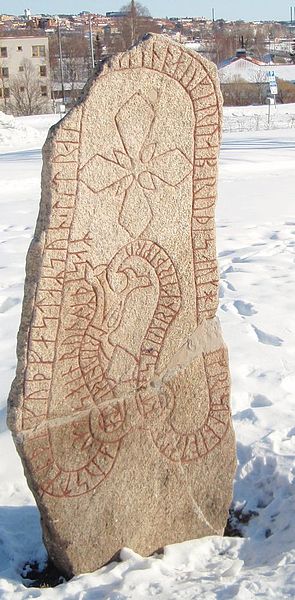| Added | Sat, 25/07/2020 |
| Hierarchy | |
| Другие названия | Stursheuduret
|
| Область распространения | Sweden
|
| Характерные признаки |
→
→
→
→
→
→
→
Place → Reservoir
|
| Sources |
The Storshen Monster (Swedish. Storsjöodjuret) — a lake monster supposedly living in a Swedish lake Storschen, Emtland province.
The Sturgeon monster is described as a snake or a marine reptile with fins on its back and a dog's head. The monster is about six meters long, and some sources say that it has several humps.
Legends about him have been known since 1635.
The monster is first mentioned in a fairy tale recorded by the local priest Morgens Pedersen in 1635.
It says that one day two trolls gathered to boil water for themselves on the shore of the lake. They built a fire and hung a kettle over it. Although the water in it had been boiling for a long time, they all kept the kettle on and boiled the water to the point that a creepy creature with a cat's head and a snake's body jumped out of the kettle. It quickly looked around and ran into the lake. The monster liked the lake, and it stayed there to live, and eventually reached a huge size.
"Ketil Runske bound a powerful monster with a powerful spell carved in stone and raised on the island of Frezon. The serpent was depicted on the stone. Thus, the spell had to be tied up until the day when someone would come who could read and understand the inscription on the stone."Another legend was recorded by Prosecutor Andreas Plantin in 1685.
"It is said that under this [runic] stone lies an awfully large serpent's head, and that the body extends over the Sturcyon to Knitta and Hill Sand, where the tail is buried.
Due to the fact that no one could cross the [Storshen] peacefully, the ferryman and his wife declare, along with many others, that in recent turbulent times this stone was destroyed and broken in two. While this stone was lying on the ground, many strange things happened in the water until the stone was lifted and reassembled."
* The runestone referred to by both texts is the Frezo runestone, the northernmost runestone in the world.
However, despite the fact that the stone does depict a large snake, there is not a single mention of it. Instead, it tells about Austmar, the baptism of the son of Goodfaster in Yamtland. Although it was really split into two parts.In the 1890s, the monster aroused general interest for the first time.
People tried to catch the monster, even the king of Sweden helped them Oscar II. As a result, no one found any signs of the monster's existence, but those who believe in the monster have not lost their interest in it and hope for its existence.
In August 2008, a film crew filming a documentary about the monster on the lake reported that their infrared cameras recorded the presence of a certain endothermic mass.
The creature is described as a snake or marine reptile with a smooth shiny gray skin, with a dog or cat head, with ventral fins along the entire body or with webbed paws, and also having, according to some versions, several prominent dorsal fins. Also, some witnesses compared its shape to an overturned boat. The length of the body ranges from 1 to 14 meters, and it moves in the water with undulating movements, bending in a vertical plane.
Легенда про Стуршёнское чудовище была записана прокурором Андреасом Плантиным в 1685 году. В ней упоминается, что под руническим камнем лежит ужасно большая голова змея, и что тело простирается над Стурсьоном до Книтты и Хилле Сандом, где похоронен хвост. Этот камень был разрушен и разбит надвое. Пока этот камень лежал на земле, многие странные вещи происходили в воде, пока камень не был поднят и собран заново. Рунический камень, на который ссылается текст - это рунический камень Фрезо, самый северный в мире рунный камень. Однако, несмотря на то, что на камне действительно изображен большой змей, в нем нет ни одного упоминания о нем. Вместо этого там рассказывается об Аустмаре, крещении сына Гудфастра в Ямтланде. Хотя этот камень действительно явно был разбит на две части.
Phenomenon in mass culture
Log in or register to post comments

